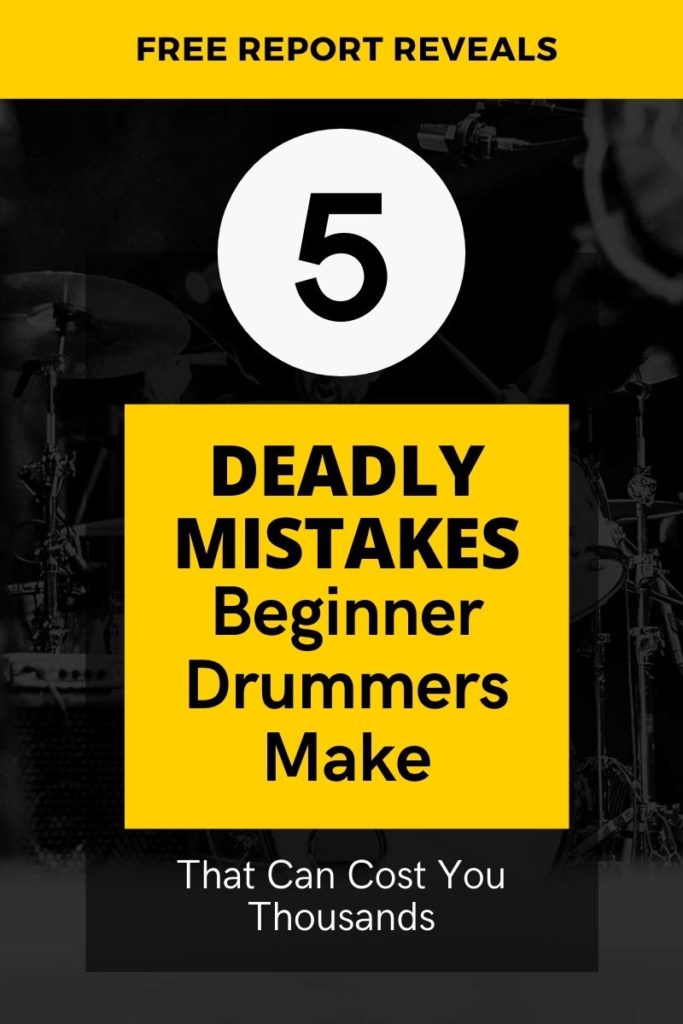Drumming For Beginners [How To Get Started With A Basic Beat]
Ever wanted to play drums? Don’t know where to start? Drumming for beginners will teach you HOW to get started with a basic drum beat. Remember, it’s never to late to learn! Furthermore, you don’t even need to have a drum kit. This basic drum beat will get you well on the way with your drumming.
No Need For a Drum Kit with Basic Drumming for Beginners
If you already have a drum kit, great! If you don’t, don’t worry – you can practice the basic drumming for beginners using your hands and legs only. To clarify you’ll be tapping on your body with your hands and using your foot to tap the floor.
This is a great way to practice because you can do it anywhere. Furthermore, transitioning onto drums is easy because you already know how to play a beat! Even though it will feel different (you will have sticks in your hands), the concept is still the same.
Never Too Late to Learn Drumming For Beginners
You can start learning drumming at any age. My method of teaching how to play a basic drum beat is straight forward – even if you think you don’t have a natural rhythm. I’ve tested it with people that have never drummed before during my drumming experiences in London. You learn a basic drum beat in no time and come away with a better understanding of the drummer’s crucial role in any band / ensemble.
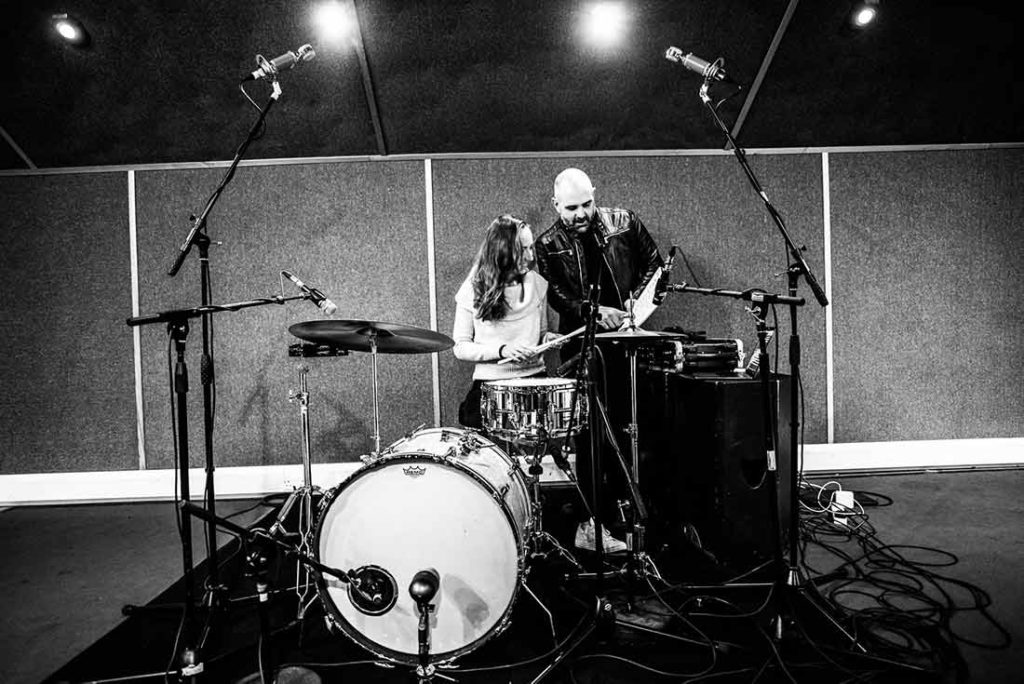
The benefit of learning drums with a teacher is to guide you through the basics and to check your progress. Many people think that practicing a lot will make you a perfect drummer but that’s not entirely true. Spending hours drumming incorrectly will get you limited progress. However, practice correctly will save you so much time in the long run. The old saying should be: PERFECT practice makes PERFECT.
Do remember to download my FREE training “5 DEADLY MISTAKES BEGINNER DRUMMERS MAKE”.
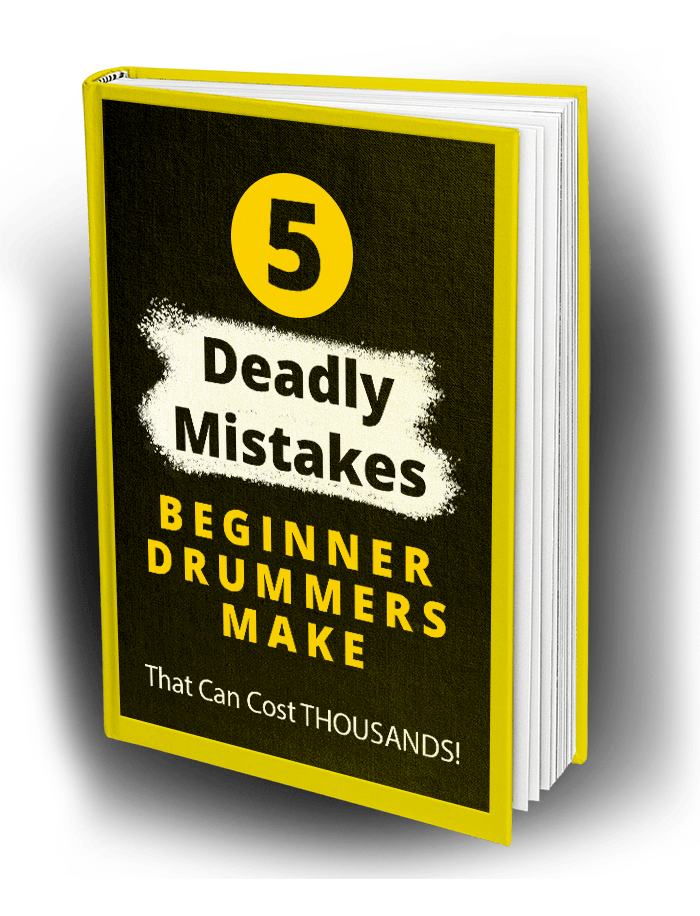
The Importance of Counting
The drummer’s primary role in a band is that of the time keeper. In my videos drumming without drums (Parts I & II) the emphasis is on the importance of counting to help you keep time. Therefore, it is important when drumming for beginners to count out aloud. Furthermore, it’ll help you understand rhythm better with the placement of notes against the time.
For example, most pop music is in the 4/4 time signature. This simply means there are 4 beats to every bar / measure of music*. Therefore you count 1, 2, 3, 4 repetitively throughout an entire song. Try it yourself! Count along with your favourite music – see if you can last the entire song without breaking the pattern. Challenge yourself! Conversely, you may find that this doesn’t always work because some music is in a different time signature. If that’s the case, look online to find out what time signature your song is in and count the new number instead.
This may appear odd to begin with because you focus on the time rather than the music. Here’s a tip, when you hear the sound of finger clicks / hands clapping or a snare drum (short, sharp, crack sound) it’ll tend to be on beats 2 + 4.
*[music theory] A bar / measure is denoted as a box within the music staves (lines / grid). This is where the rhythm and pitch of the notes are notated.
The Drum Kit Explained
A big part of learning drumming as a beginner is to learn about the drum kit. Surprisingly a drum in the modern form has only been around for the last century – give or take a few years. Originally known as a Trap Set then a Drum Set. However these days it’s more common to call it a Drum Kit. It can consist of all manner of percussive elements but for this explanation we’ll stick to the basics.
The Bass Drum a.k.a. the Kick Drum, is the large drum which rests on the floor supported by a pair of spurs / legs. These legs secure it from moving around on the floor as they are placed on the side of it. Above all, you play the bass drum with your foot by means of a bass drum pedal.
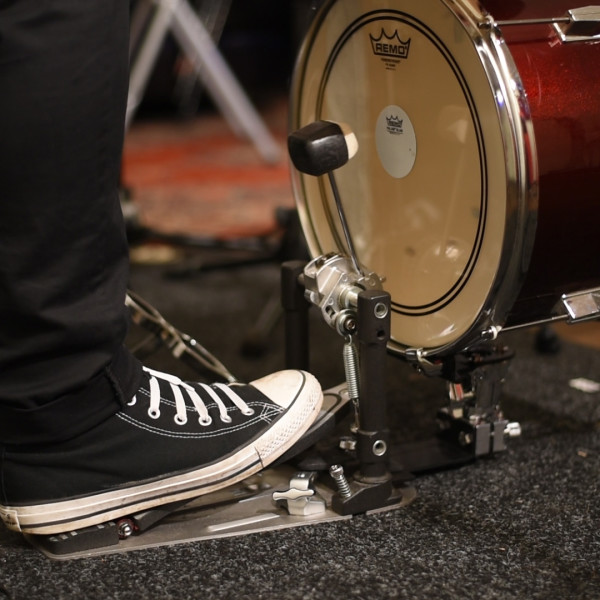
The Snare Drum is the drum you will most likely use more often. It produces a sharp, staccato sound when hit. This is because snare wires held underneath (and tensioned against the underside) vibrate. You’ll see snare drums used often in; orchestras, concert bands, marching bands, parades, drumlines, drum corps, and more. In contemporary music hand claps or finger snaps have replaced the snare drum as a traditional back beat on beats 2 & 4.
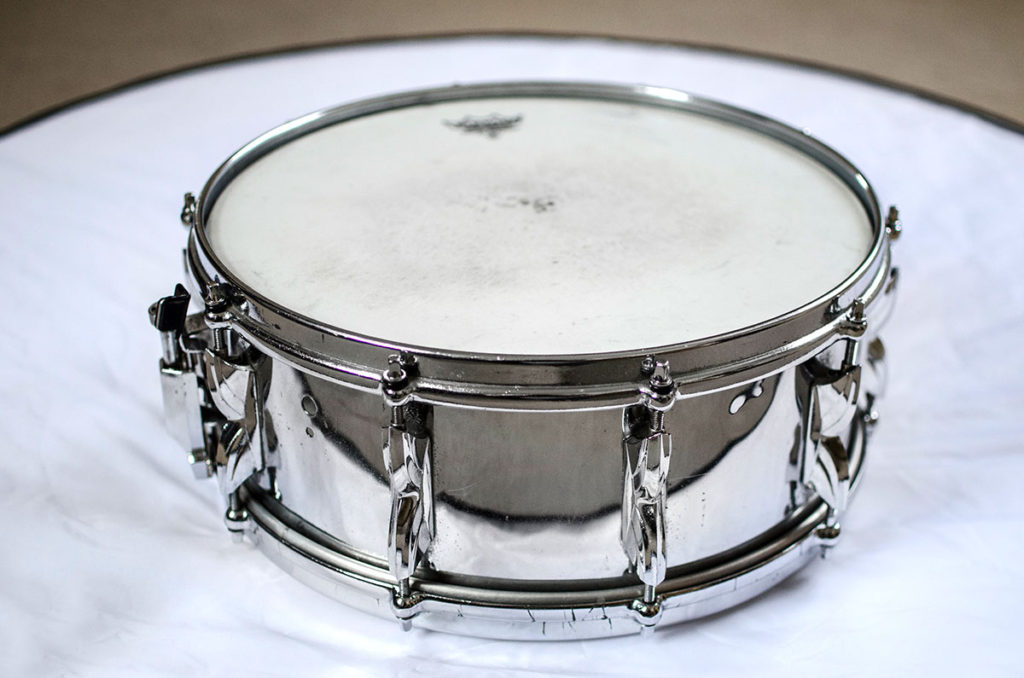
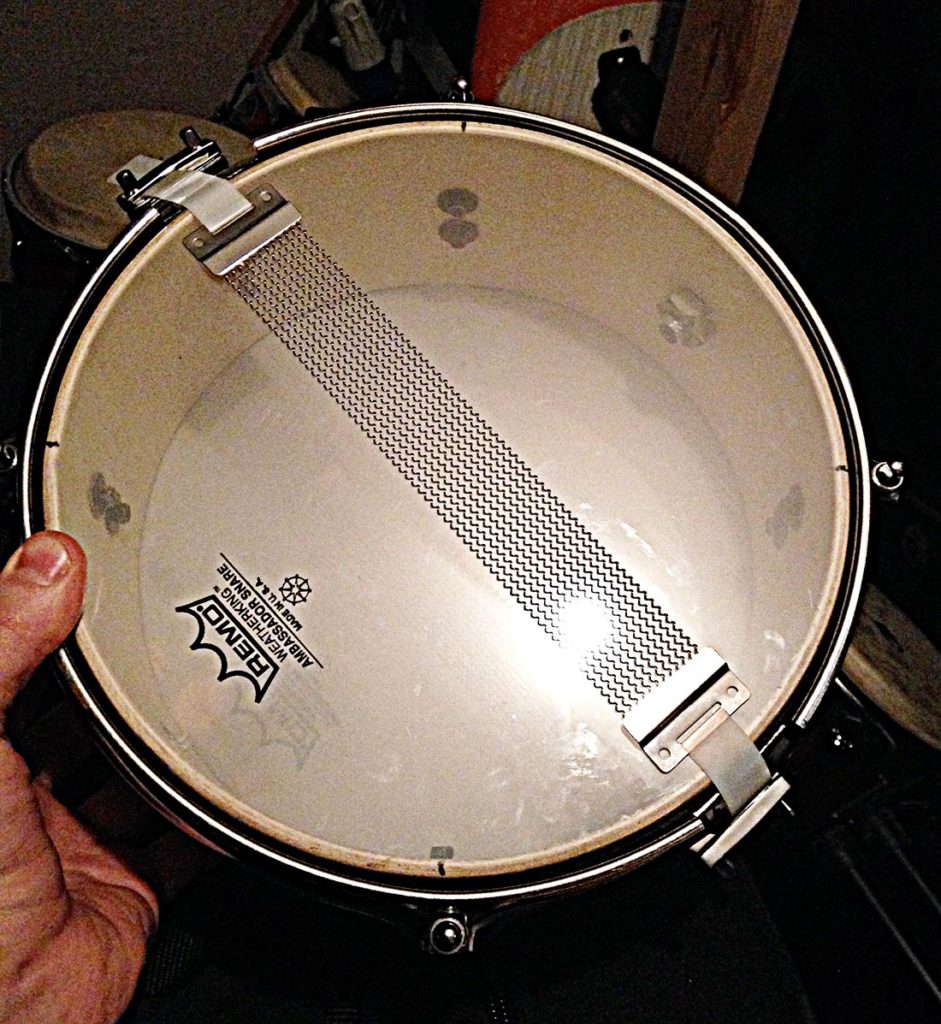
The Tom Tom is a drum with no snares. Most toms range in size between 6″ (15cm) and 20″ (51 cm) in diameter and vary in depth. Furthermore, floor toms can go as large as 24″ (61 cm) diameter.

The Floor Tom – see The Tom Tom. A tom tom held up off the floor by adjustable legs for desired height and angle.
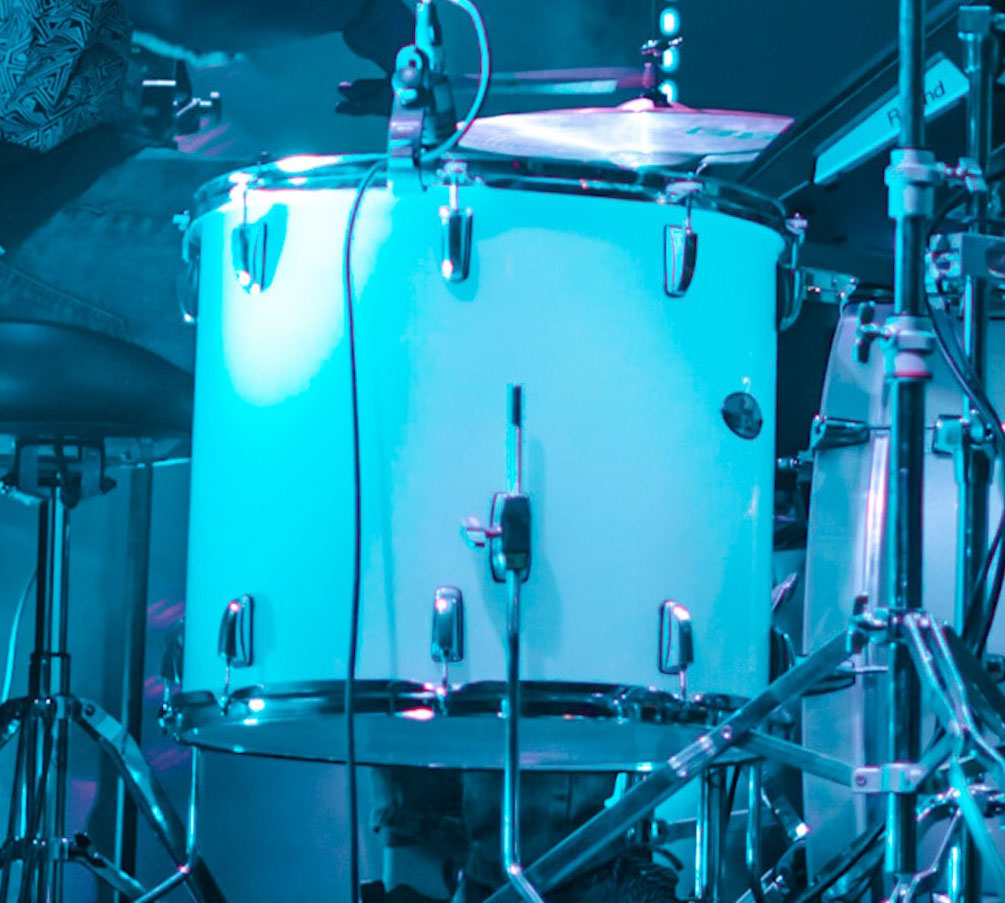
Drumming For Beginners – The Cymbals
Hi Hats – a pair of cymbals varying in size but commonly around the 14″ (36cm) diameter. One sits upside down on a hi hat stand and the other is attaches to the Hi Hat stand rod via a Hi Hat clutch. You open and close them together by operating the pedal of the Hi Hat stand with your foot. Generally you play the subdivision notes on the Hi Hat cymbals in the closed position.
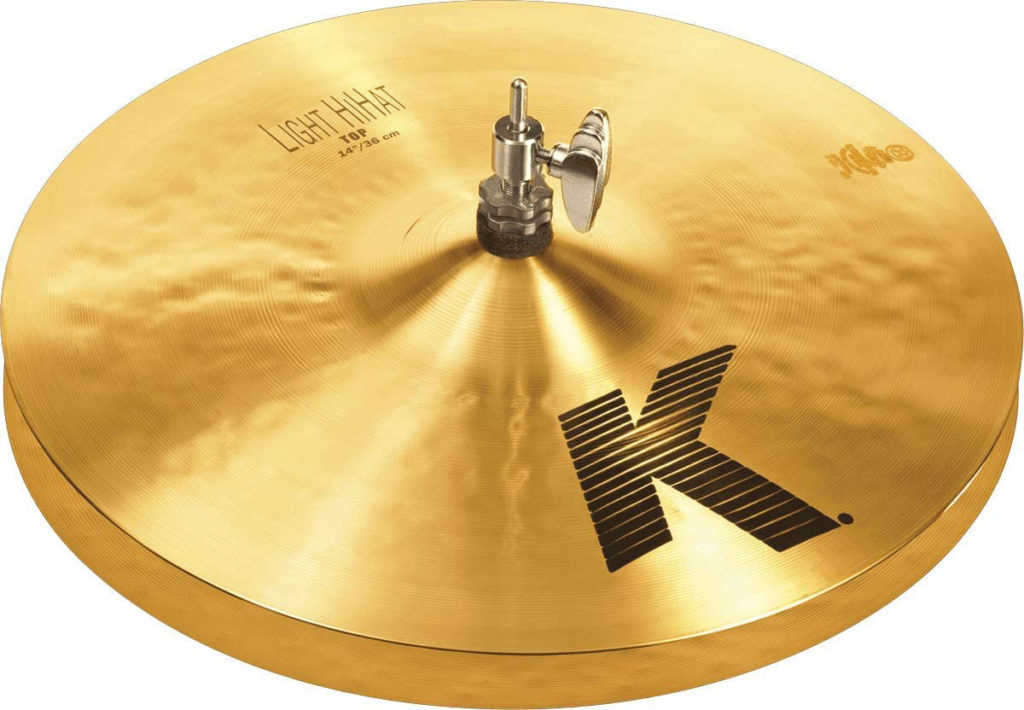
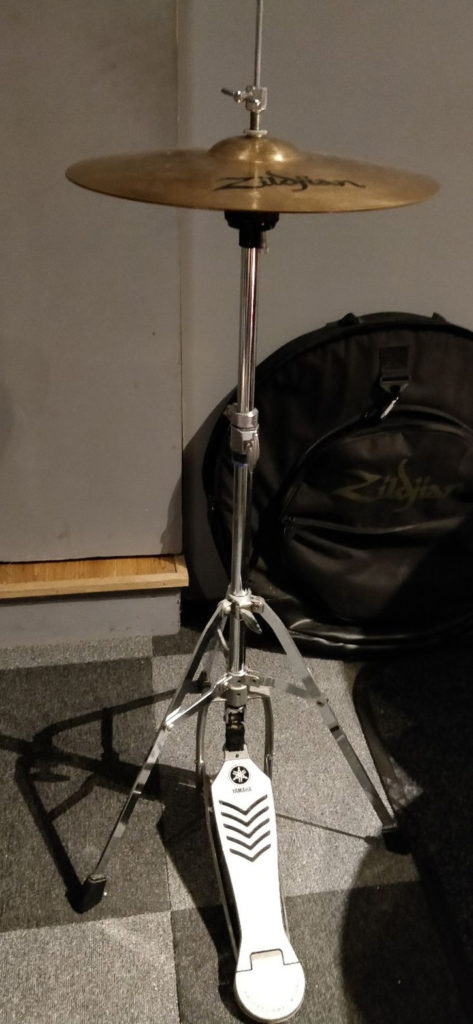
Ride Cymbal – Usually the bigger of all the cymbals. In addition you play it as an alternative to the Hi Hats. It’s a different sound source for you play the sub-divisions. Used most often in Jazz music for example.
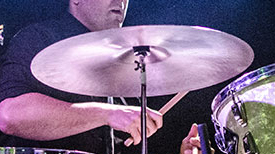
Crash Cymbal – You play the crash cymbal to emphasize a different section in a song or passage of music. You can of course also play it like you would the Hi Hats and Ride cymbal. Some drummers use several crash cymbals of various sizes to have more sonic options. Not forgetting this type of cymbal is great for building a crescendo.

FX CYMBALS –
Splash Cymbal – Similar to a crash cymbal only smaller. The range from 6″ (15cm) to 12″ (30cm) and have short staccato sounds.
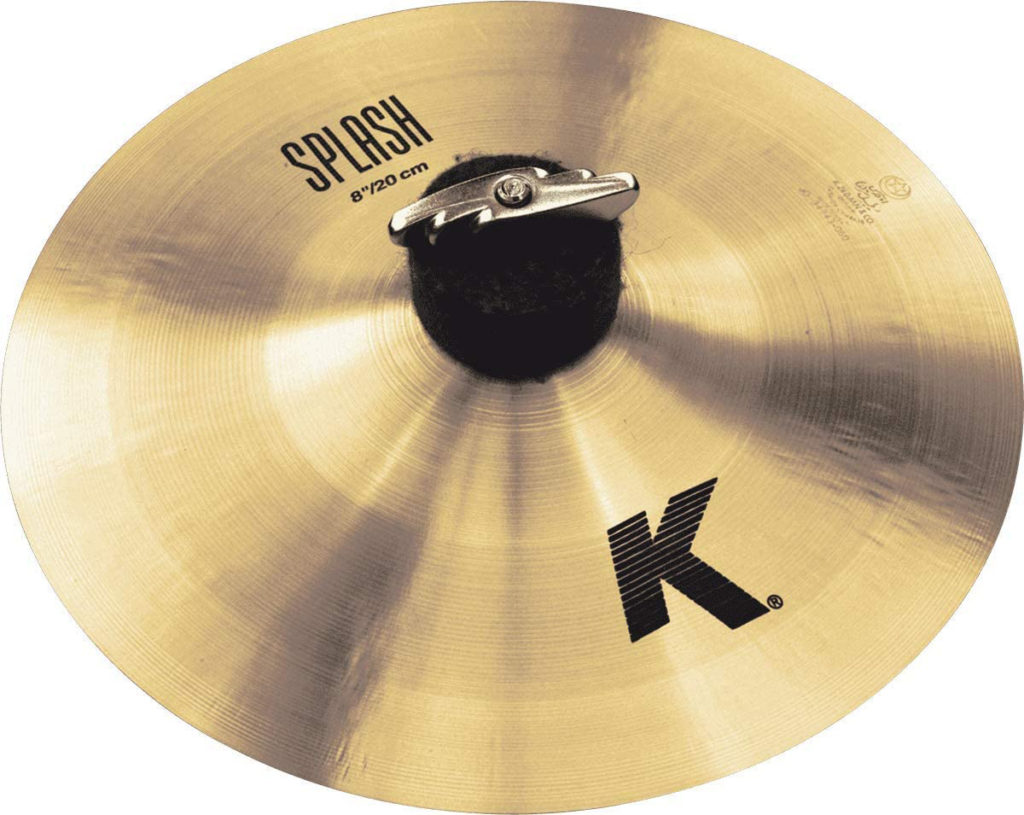
China / Chinese Cymbal – This looks similar to a regular cymbal but has the outer edge of the cymbal kinked outwards. It comes in different sizes and has a trashy sound. A great alternative to a Crash Cymbal. They call a different version of this cymbal a Swish Knocker and you play it like a ride cymbal.
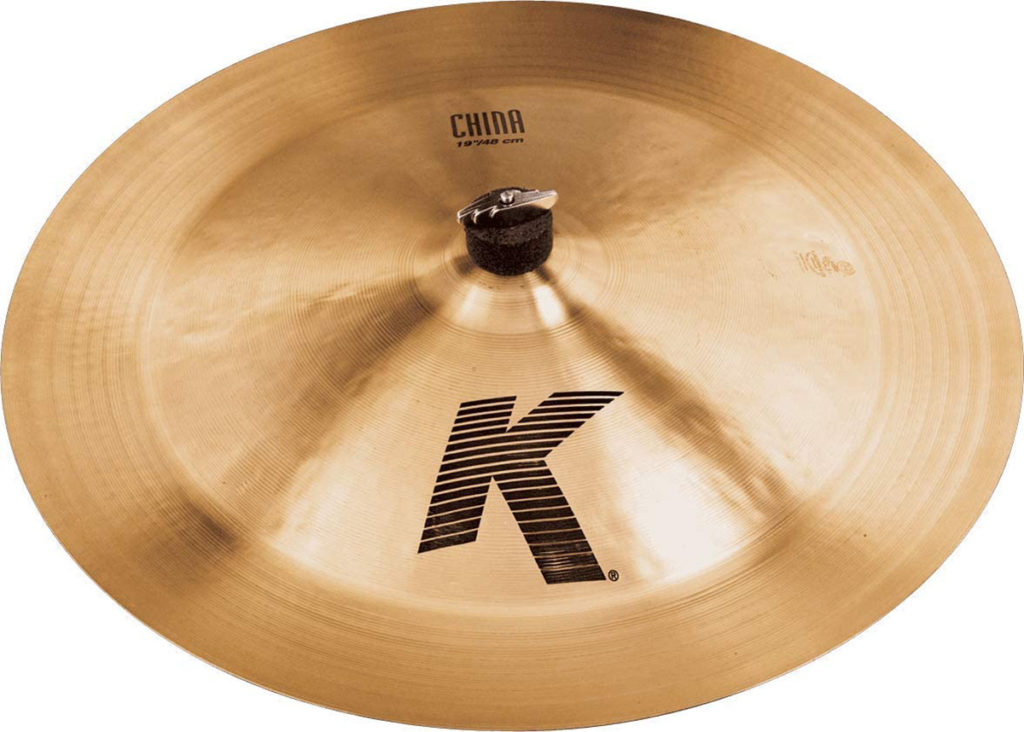
Ozone Cymbals – Any type of cymbal with holes deliberately cut out of the main body of the cymbal. As a result, it adds a different texture of sound to the cymbal.
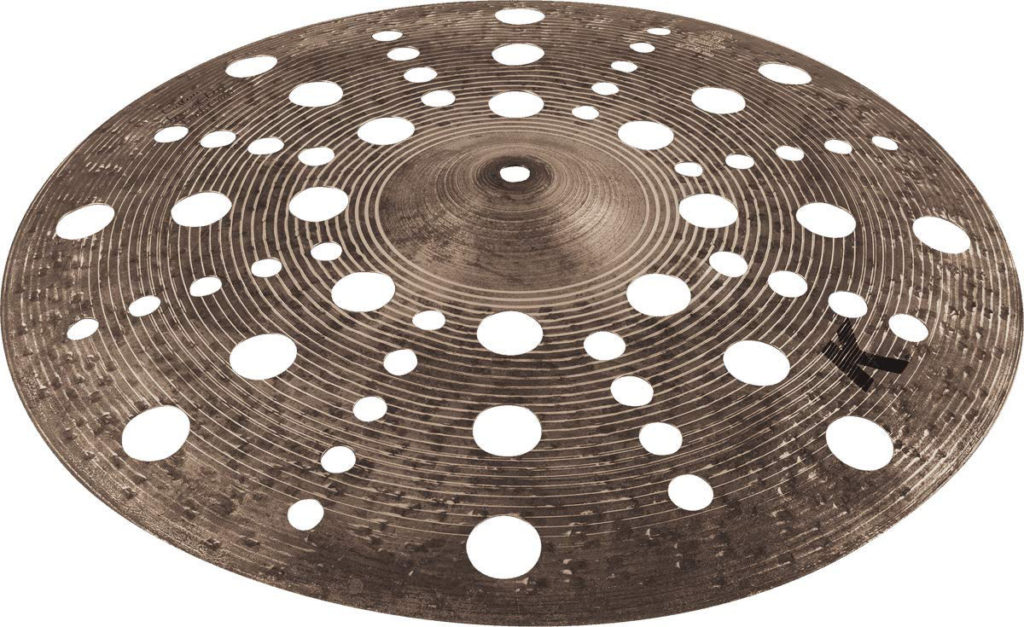
Drumming For Beginners – Drum Heads / Drum Skins
The drum heads / drum skins are the mylar plastic films covering each end of the drum (unless they are concert toms which only use the one drum head). In the past, they used to use animal skins to cover the drums, hence the term ‘drum skins’. Nowadays plastic drum heads / drum skins are the desired alternative. The batter head is the drum head you play and the resonant head is the drum head underneath that resonates – it also controls the pitch of the drum.
They come as a clear (see through) option or with a coated texture (similar to sand paper) or otherwise in a variety of colours. The coated options offer resistance when playing the surface with a brush. This enhances the sound of the brush strokes; preferable with jazz drummers. Also, as a result of the coating on the drum heads it acts as minor dampening. The result is a sound that is less bright. Clear heads also are preferable resonant heads but it depends on each individual drummer’s taste.
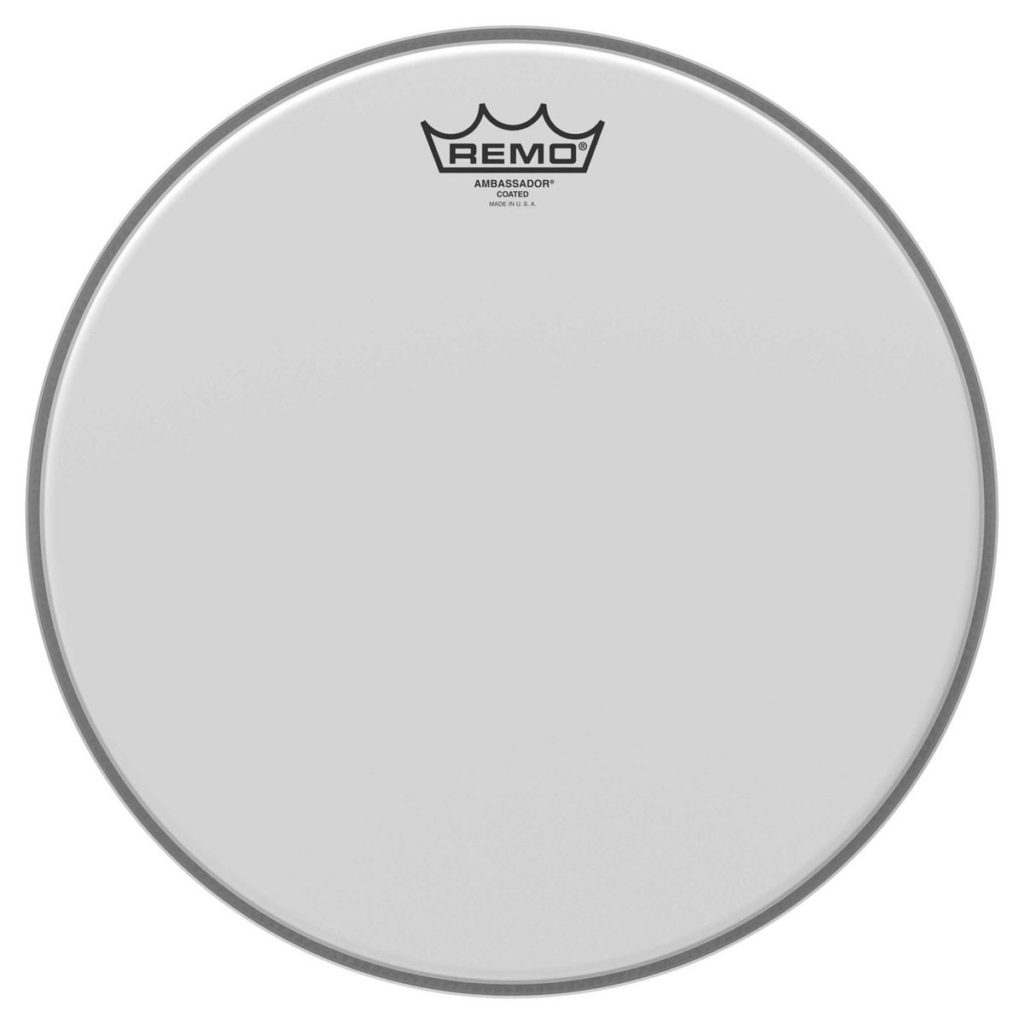
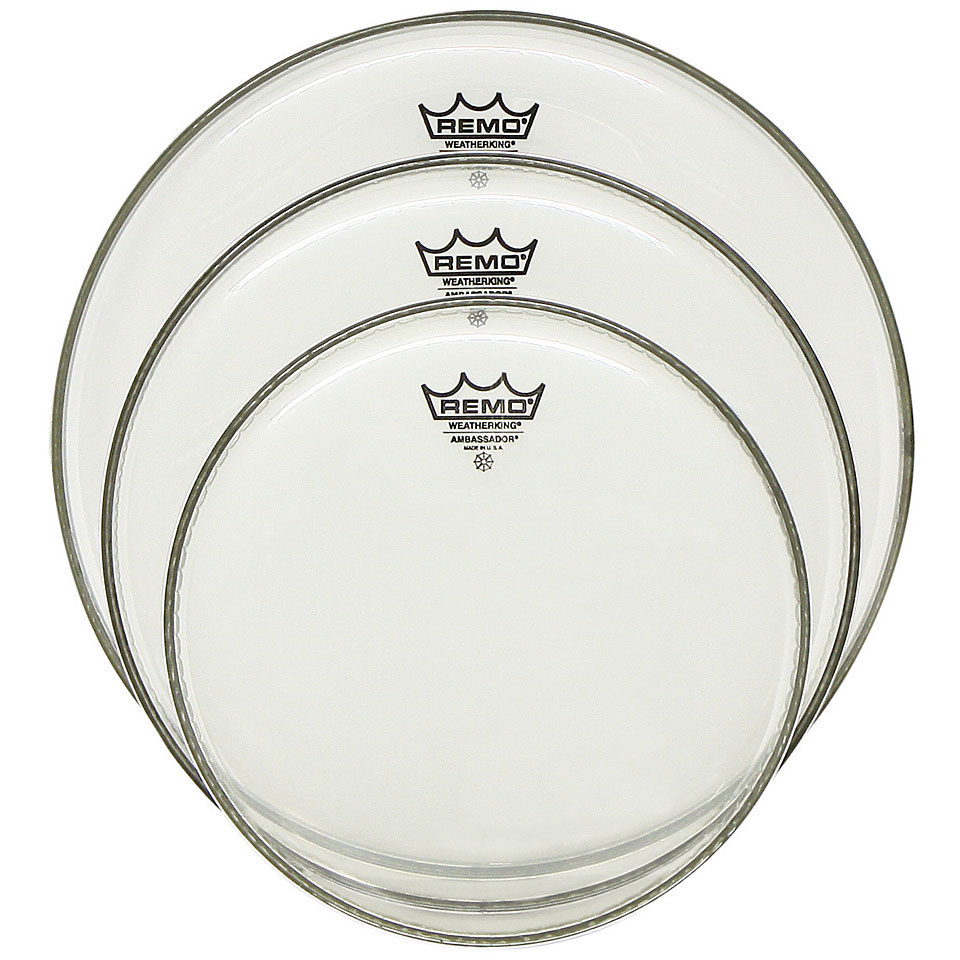

Drumming For Beginners – Drum Sticks
Obviously you strike the drums with drum sticks. Drum sticks vary in thickness, weight and shape. The choice of drum stick depends on the drummer’s preference. However, the drum stick size 5A is perhaps the most popular and a good starting choice for drumming for beginners. From there you can experiment and find out your preferred choice of stick. Generally comfort and ease of playing will be the deciding factor.
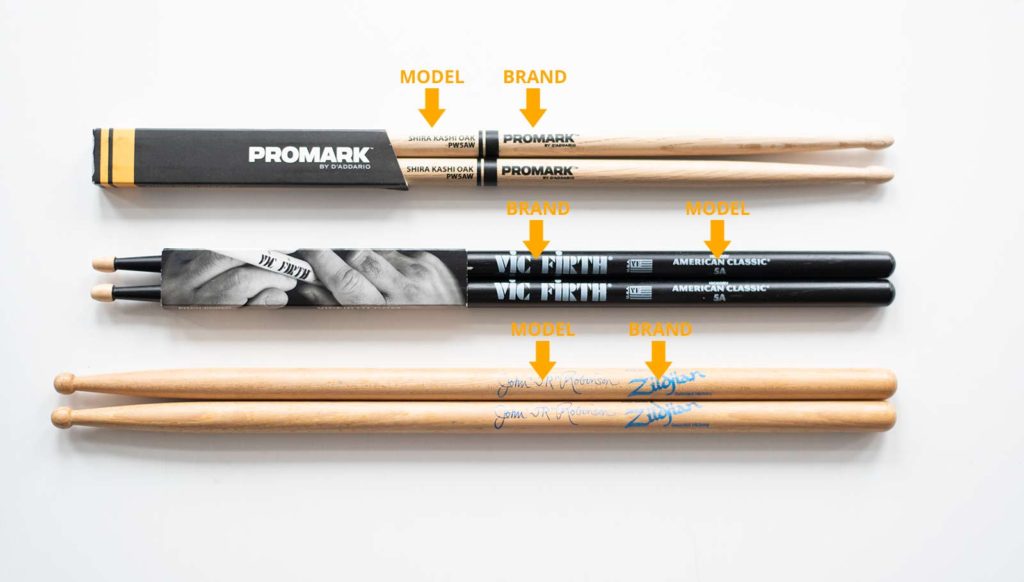
Marching band snare drummers may use thicker sticks to help with the projection of sound (more thickness = more air moved from the drum = more sound). Especially when playing outdoors with no amplification. Conversely a jazz drummer playing at a small venue may opt for a lighter thinner stick. Again it’s really the drummer’s preference.
There are also various types of drum stick such as –
- Hot Rods (dowel rods grouped together)
- Brushes (Steel / plastic wires extended from a tube to create sustained sounds on the drums)
- Mallets (drum sticks with wool or felt on the ends to create a softer sound)
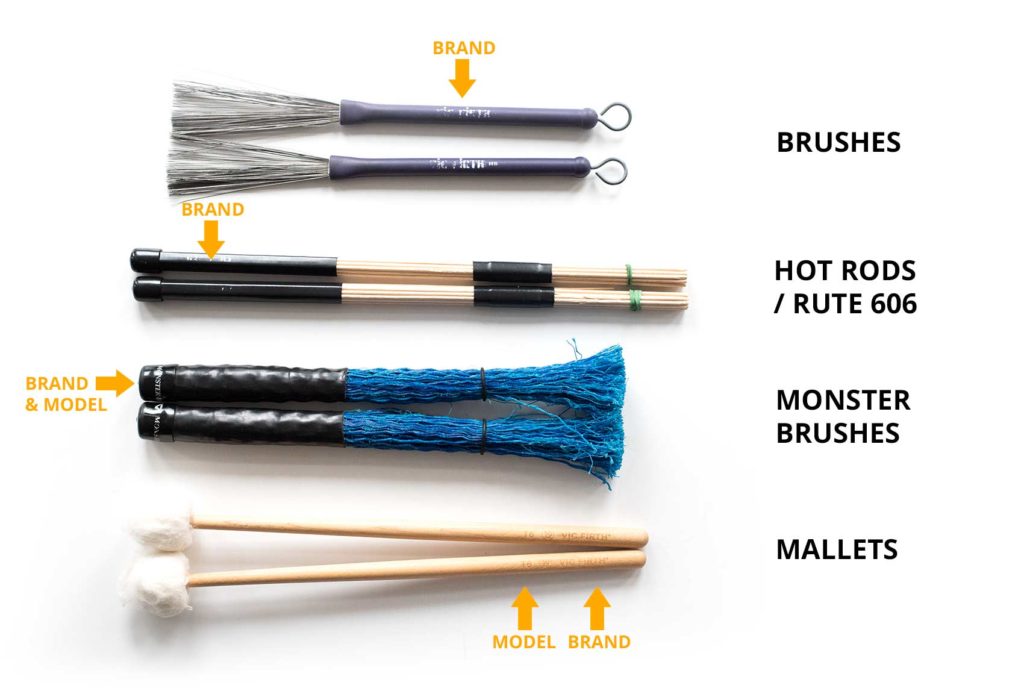
Drumming For Beginners Freebie!!!
Thank you for reading my blog, if you haven’t already, check out my YouTube video above and do remember to get your drumming for beginners FREEBIE below!
Download my FREE TRAINING
“5 DEADLY MISTAKES BEGINNER DRUMMERS MAKE”

